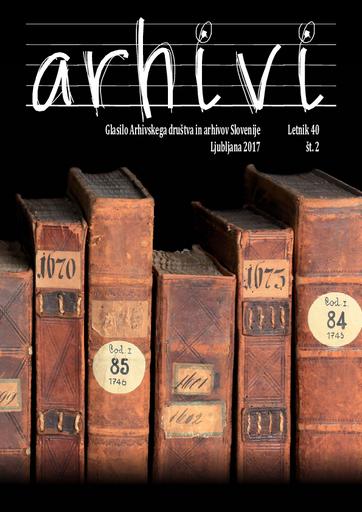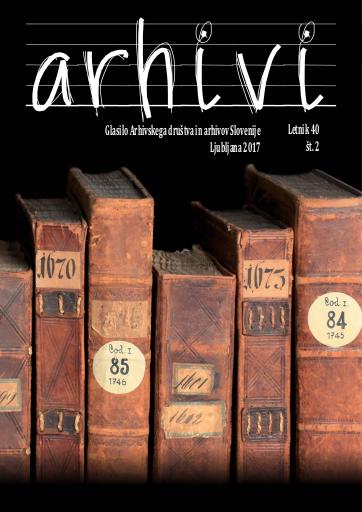/
Serijske publikacije
/
Arhivi
Karmeličani na Kostanjevici pri Novi Gorici


To delo avtorja Matjaž Ambrožič je ponujeno pod Creative Commons Priznanje avtorstva-Nekomercialno-Deljenje pod enakimi pogoji 4.0 Mednarodna
Datoteke (1)

Opis
Patri karmeličani so začeli delovati na slovenskih tleh v 17. stoletju. Leta 1623 je grof Matija Thurn dal na Kostanjevici pri Novi Gorici sezidati majhno cerkvico v čast Materi Božji, leta 1649 pa še samostan, ki so ga leta 1650 prevzeli karmeličani. V njem so složno živeli nemški, italijanski in slovenski patri. Leta 1785 so bili karmeličani zaradi jožefinskih reform izgnani. Vztrajne prošnje grofa Thurna so dosegle, da samostana niso porušili. Od leta 1811 ga upravljajo patri frančiškani. Med prvo svetovno vojno je bil skoraj popolnoma porušen, po njej pa obnovljen. Leta 1924 je italijanska oblast slovenske patre pregnala. Samostan je znan po kripti, v kateri počivajo poslednji francoski kralji iz dinastije Burbonov.
Metapodatki (12)
- identifikatorhttps://hdl.handle.net/11686/41538
- naslov
- Karmeličani na Kostanjevici pri Novi Gorici
- Carmelites in Kostanjevica near Nova Gorica
- avtor
- Matjaž Ambrožič
- soavtor
- Gregor Jenuš (gl. in odg. ur.)
- Dunja Mušič (teh. ur.)
- Petra Markuš (prev.)
- Tanja Martelanc (foto.)
- predmet
- ČLANKI IN RAZPRAVE
- karmeličani
- frančiškani
- samostan
- Kostanjevica pri Novi Goric
- ARTICLES AND PAPERS
- Carmelites
- Franciscans
- monastery
- Kostanjevica near Nova Gorica
- opis
- Several tales on the origins of Mary’s house of worship are preserved. All traditions are fundamentally identical, and it can therefore be concluded thatthe merciful image of the Mother of God was depicted on the stone in the chestnut grove by an unknown hand. People were flocking to her image to worship her. Count Matija Thurn as the owner of the chestnut grove decided to put Mary’s image to a more appropriate place. Carmelites, Dominicans, and Franciscans were competing to acquire possession of the new church and monastery. Finally, Discalced Carmelites achieved it for they enjoyed the support of the founder and of the Vienna’s court. Count Thurn provided Carmelites not only with a place to live but also bequeathed large areas of land to them in order for them to use the income from that land and gain sufficient funds for regular maintenance and numerous other needs. Monastic life in Kostanjevica started on 10 July 1651. Carmelites lived contemplative lives and contemplated the salvation of the souls. They guarded the temple, performed God’s work, promoted the glory of the Mother of the Saviour, and offered spiritual help to devout people. Special attention was given to the Marian devotion. Every Saturday and Marian holidays they gave service in honour of their founder and his family. On average, monastery housed 15 to 20 friars. Their head was a prior who was appointed by the provincial based in Cologne. In 1701, Kostanjevica Monastery (convent) became a part of Austrian Carmelite province. The monastery owned numerous valuable objects of worship and votive objects. Their assets were gained by bequests, acquisition of deceased person’s estates, and prudent management. On 9 November 1784, Carmelites received a decree on the suppression of their monastery issued by Joseph II. The inventory of assets was drawn up in December in the presence of vicar Gregor of St. John the Baptist. In the first days of January 1785, the monastery was emptied. The monastery and church were left to ruination, to the great displeasure of the townsfolk and countryfolk. The year 1796 saw the church reopened to the public and entrusted to a devout priest. Since 1811, the Franciscans have been managing the church. The greater part of modestly preserved documentation on Kostanjevica monastery is kept in Archivio Storico Provinciale di Gorizia (ASPG) and would require separate scientific processing.
- založnik
- Arhivsko društvo Slovenije
- datum
- 2017
- 01. 01. 2017
- tip
- besedilo
- jezik
- Slovenščina
- jeDelOd
- pravice
- licenca: ccByNcSa
